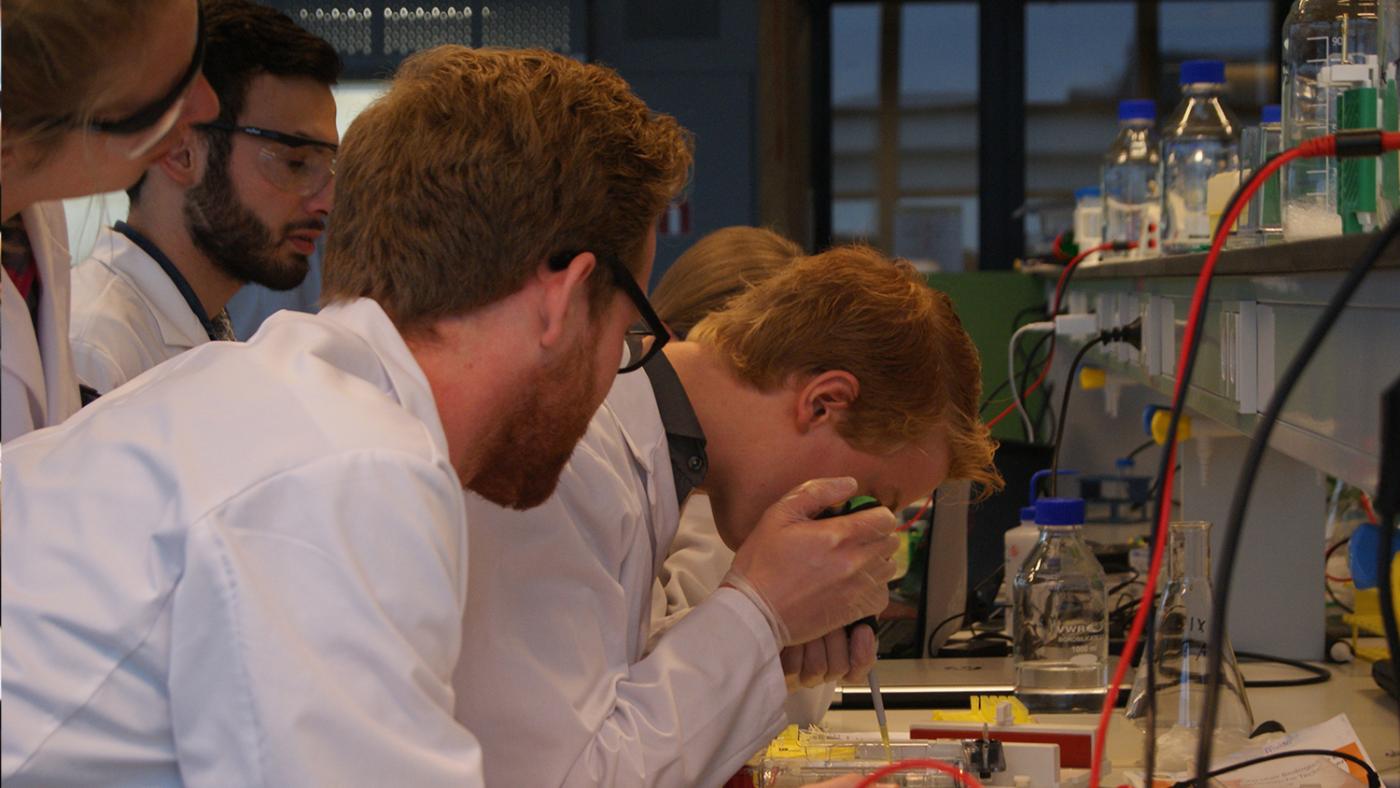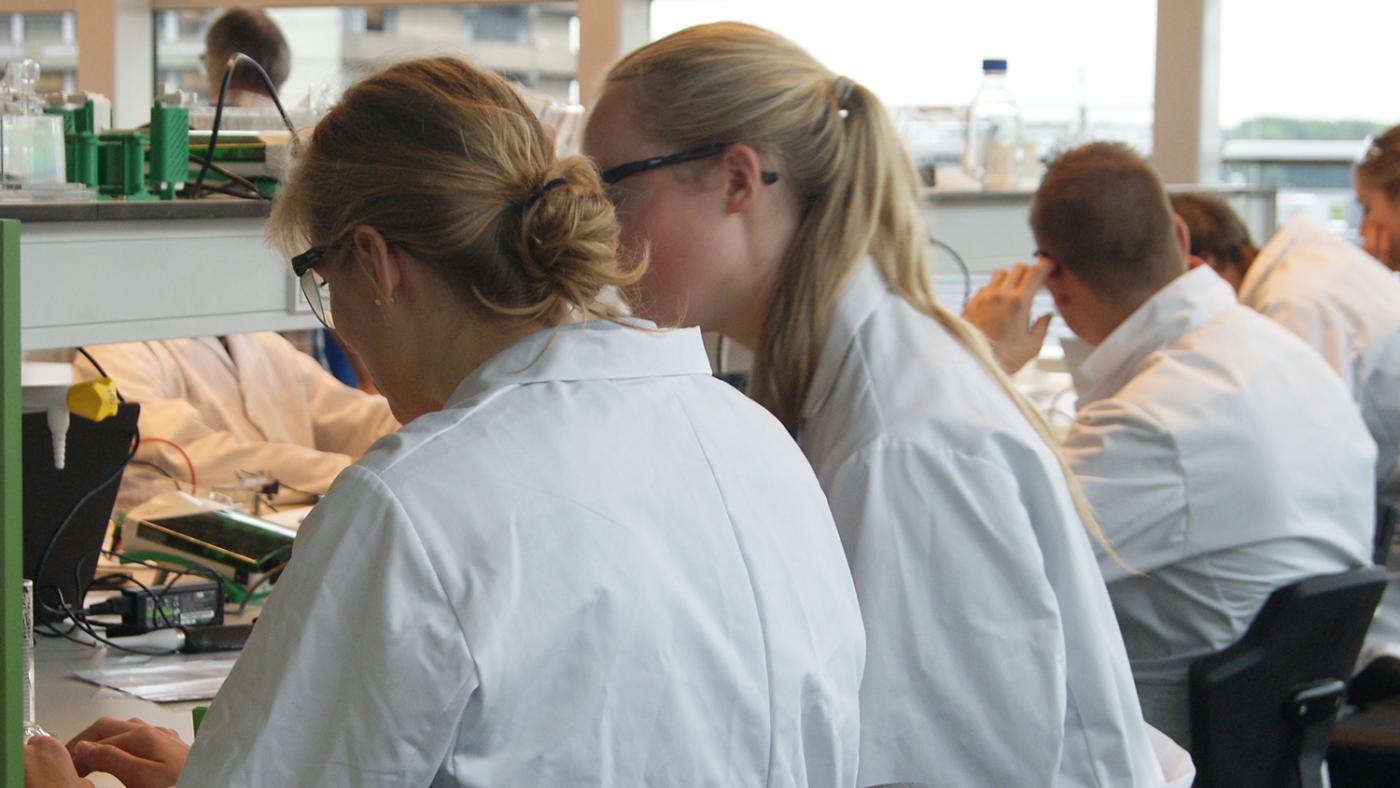‘Current situation is untenable’
Educational quality at risk due to shortage of practical classrooms

At first glance, the shortage of practical classrooms does not seem too bad. Last academic year, the occupancy rate of UU's classrooms was around 70 percent. In other words, UU's rooms went unused more than a quarter of the time.
Nevertheless, timetable employee Marina Boelhouwer says that UU is in “the most dire situation when it comes to practical work” she has experienced in sixteen years working for the university. One of her tasks is scheduling practical assignments in the Victor J. Koningsberger building. “We’re pulling almost every possible string right now to get the scheduling done,” she says.
According to a report titled Availability of Practical Classrooms in the Koningsberger Building, dating from March 2023 and addressed to the board of the Faculty of Science, there is simply not enough space in the building. “It is clear that the current situation is untenable,” the report’s authors argue.
The number of students is increasing
The report gives a straightforward reason for this emergency: the unexpected rise in the number of students. When the construction plans for the building were made in 2010, the education department asked for twelve practical classrooms. Eight were built, which was sufficient for the number of students at the time. Besides, these numbers were predicted to decline until 2016.
Nothing could be further from the truth, however. The number of students has grown exponentially university-wide, and the Faculty of Science was no exception. It also had to deal with a much larger influx of students. Biology, a study programme with a lot of practical education, is among the ones for which the number of students has risen the most significantly. This year, the Bachelor’s programme had 456 applications, compared to 323 in 2018. In addition, the faculty now has a new programme, Molecular & Biophysical Life Sciences (MBLS), which offers a lot of practical education. This bachelor’s degree is also still growing with regards to student numbers.
The report mentioned above indicates that this situation has generated problems for the faculty. It requires a lot of consultation among teachers, education managers and timetable professionals to come up with a schedule that works for everyone. In addition, there are courses “where practical education is desired but, due to the lack of space, it is not requested at all”, the writers state. According to the report, the biggest bottlenecks are in the MBLS and Biology programmes.

Hard to quantify
The relatively low occupancy rate of practical classrooms therefore paints the wrong picture, Biology lecturer and researcher Suzan Ruijtenberg explains. Ruijtenberg is also a member of the council of the Faculty of Science. She says that practical assignments cannot be scheduled consecutively, like other lectures. After all, they usually have to be built up first, taking safety conditions into account.
“If you have a practical assignment at 9 am on Monday, you have to prepare the lab on Sunday. Sometimes we get annoyed by that,” says Ruijtenberg. Moreover, the average occupancy rate is low because hardly any practical assignments are scheduled in the first and last week of a term. “You first want to provide your students with theoretical knowledge, so that they can then apply it in practice. In the last week, an exam is supposed to take place. Adjusting that order really matters. I understand that we have to conform to the boundaries of the Science Park, but we also strive to provide good education. Things like that are hard to quantify.”
She indicates that this situation can make it difficult for the university's administration to see how acute the shortage of rooms is sometimes. Currently, practical assignments are planned in the first two weeks of a term, despite the possibility of it affecting the quality of education. “It can be frustrating when you’ve designed an entire course and then you get a ‘no’, or when you have to teach a practical assignment in the evening and your course gets bad ratings from students as a result. But in the end, everyone understands that the university can’t just create a new building out of the blue. However, we teachers want recognition, so we would prefer not to see others saying that there is no shortage of space,” says Ruijtenberg.
Research
Timetable employee Boelhouwer is of the opinion that the Executive Board does take the subject very seriously. She participates in a broad study conducted by the Facility Service Centre (FSC) into the needs of the Faculty of Science in terms of practical classrooms. She is satisfied with FSC’s attitude, as it seems to be "really looking for good feedback”. Since purchasing new practical classrooms is not like “buying a packet of butter”, an intensive analysis must take place, explains Boelhouwer. “You can’t build a practical classroom based on what’s needed right now.”
FSC’s study within the Faculty of Science has been running for about a year. It is analysing estimates of the number of students over the next few years as well as investigating which practical classrooms have the biggest bottlenecks. Based on this analysis, the university will decide whether new practical classrooms will be built or not, among other decisions. “But we can also set up the rooms differently, so that almost every practical assignment can be done in every classroom. We don’t know yet. It is a very broad study,” Boelhouwer elucidates. It is not yet clear when the study will be completed.
Impressive efficiency
This means that the problems will not be solved for the time being. How much will this influence the quality of education? Will UU deliver less well-trained biologists to society over the next few years? "I don’t really know,” admits Suzan Ruijtenberg. “A single microscope now has to be shared by four students because we were forced to make the groups larger. But everyone does their utmost to optimise practical assignments in such a way that they still learn the techniques. I’m impressed with what we’ve accomplished in terms of efficiency.”
Many teachers skip time-consuming practical steps by doing them themselves. For example, they don’t let students pipette substances themselves but rather prepare a premix, explains Ruijtenberg. Other solutions are even more creative. In the first-year Animal Biology course, a transition has been made to working with plasticised, reusable rats, whose tissues have been replaced by silicone. Previously, students still had to cut into "real" animals. This change was mainly implemented for ethical reasons, but it has the additional advantage that plasticised rats can be "dissected" in a lecture hall instead of a practical classroom.
That does not alter the fact that the quality of the practical education has been compromised. As an example, Ruijtenberg mentions that the experiments of the Developmental Biology and Genetics courses are much less complex today compared to ten years ago. But Ruijtenberg thinks even more is being lost. “Teachers love practical assignments because it allows them to let students experience how fun science is. The thrill of discovering something that you see under a microscope is so different from having to look at a picture because there are not enough microscopes. Students’ enjoyment may suffer because of this,” she laments.